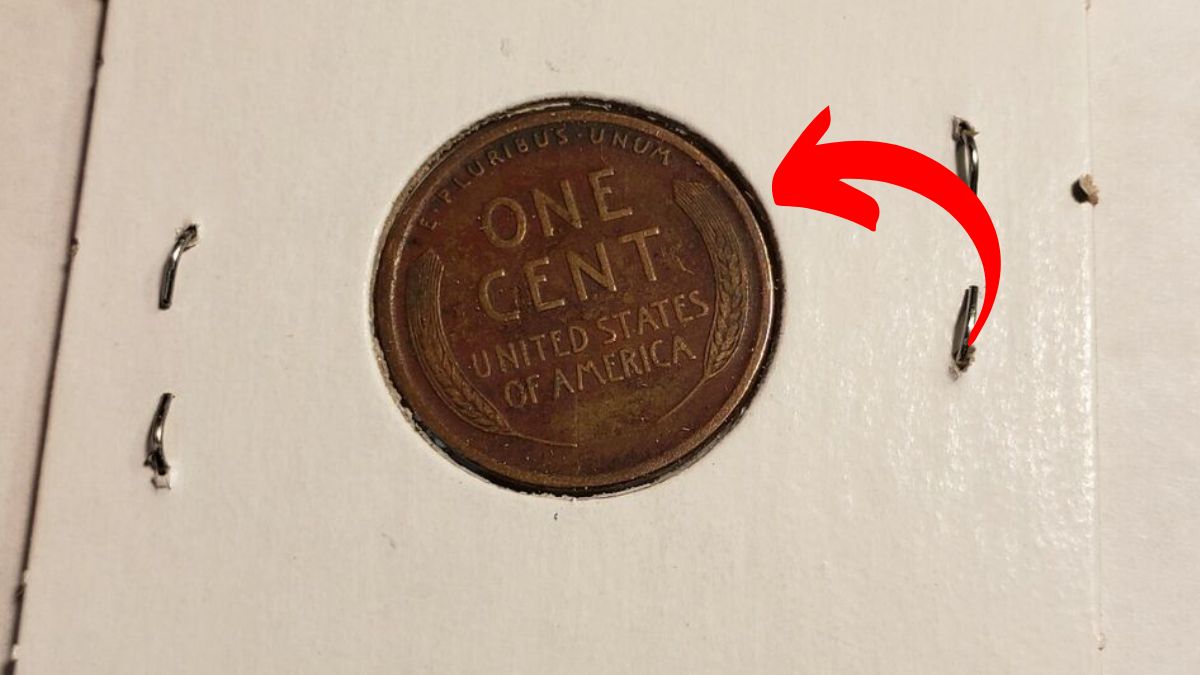Most of us don’t think twice about pennies. They pile up in jars, get lost in car cup holders, or sit forgotten in the bottom of a purse. But what if one of those tiny copper coins could actually be worth a fortune—say, half a million dollars?
Believe it or not, some rare Lincoln Wheat Pennies are still floating around in everyday circulation. If you’re lucky, you might just come across one without even realizing it! Let’s dive into what makes these pennies so valuable, how to identify them, and where you might spot one.
The Story Behind the Lincoln Wheat Penny
The Lincoln Wheat Penny first hit the scene in 1909 to celebrate Abraham Lincoln’s 100th birthday. It was a historic moment—this was the first U.S. coin to feature a real person instead of Lady Liberty. Designed by Victor David Brenner, the penny showcased Lincoln’s profile on the front and two wheat stalks on the back, earning it the nickname “Wheat Penny.”
For nearly 50 years—until 1958—this design remained in circulation before the Lincoln Memorial penny took its place. Most of these coins are just ordinary pocket change, but a few rare versions have turned into collector’s gold, fetching six-figure price tags at auctions!
What Makes Some Lincoln Wheat Pennies Worth $500,000?
Not every Wheat Penny is worth more than a cent, but certain rare variations have become incredibly valuable. Here are a few of the biggest finds:
1. The 1943 Copper Wheat Penny – A Coin That Wasn’t Supposed to Exist
During World War II, the U.S. Mint switched to making pennies from steel to conserve copper for the war effort. But a few 1943 pennies were mistakenly struck in copper, making them one of the rarest coins in American history.
If you ever come across a 1943 penny that looks copper instead of silver (steel), don’t spend it—it could be worth up to $500,000!
2. The 1909-S VDB Penny – A Controversial First Edition
When the very first Lincoln Wheat Penny was released in 1909, it included the initials of its designer—Victor David Brenner (VDB)—on the back. Some people thought the initials were too prominent, leading to their removal in later versions.
Only a limited number of these pennies were produced at the San Francisco Mint (marked with an “S”), and today, a well-preserved one can fetch over $100,000.
3. The 1955 Double Die Penny – A Famous Minting Mistake
One of the most famous error coins ever made, the 1955 Double Die Penny, features a printing mistake that caused the date and lettering to appear doubled. This unintentional quirk made it a collector’s dream.
If you have one in good condition, it could sell for tens of thousands of dollars!
How to Check If You Have a Rare Lincoln Wheat Penny
Think you might have struck gold—or, in this case, rare copper? Here’s what to look for:
- Check the Date & Mint Mark – The most valuable dates include 1909-S VDB, 1943 Copper, and 1955 Double Die.
- Look at the Color – Most 1943 pennies were made of steel and look silvery-gray. If yours looks copper, it could be an ultra-rare find.
- Try the Magnet Test – A real 1943 steel penny will stick to a magnet. If yours doesn’t, it could be a copper version worth a fortune!
- Look for Errors – Coins with double lettering, missing marks, or other minting mistakes can be worth way more than face value.
- Condition Matters – Coins in mint or uncirculated condition are always worth the most.
Where Can You Find These Rare Pennies?
Here’s the exciting part—some of these valuable pennies are still out there, waiting to be found. So where should you start looking?
- Your Pocket Change – Believe it or not, rare pennies have been spent unknowingly for years. Always check your change!
- Coin Jars & Piggy Banks – If you’ve been saving pennies for years, now’s the time to sort through them carefully.
- Garage Sales & Estate Sales – Some people unknowingly sell old coins at bargain prices.
- Bank Rolls – Many coin collectors buy penny rolls from banks and search through them for hidden treasures.
What to Do If You Think You’ve Found a Rare Penny
Think you’ve got a valuable Lincoln Wheat Penny on your hands? Here’s what you should do next:
- Don’t Clean It! – Cleaning a coin can actually reduce its value. Leave it exactly as you found it.
- Test It With a Magnet – If it’s a 1943 penny and it doesn’t stick, you might have a rare copper version worth serious cash.
- Get It Professionally Verified – A coin expert or a grading service like PCGS or NGC can confirm if your penny is the real deal.
- Sell It the Right Way – If it’s valuable, consider selling it through a reputable auction house to get the best price.
Final Thoughts
The Lincoln Wheat Penny isn’t just another coin—it’s a tiny piece of American history that could also be worth a life-changing sum of money. While most of these pennies are only worth a cent, a few rare ones have sold for as much as $500,000.
So the next time you spot a Wheat Penny in your change, don’t just toss it in a jar. Take a closer look—you might be holding a small fortune in your hands!
